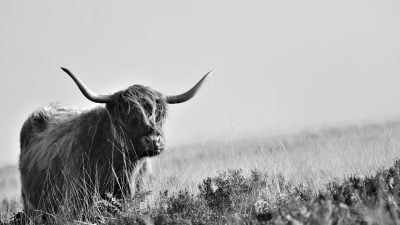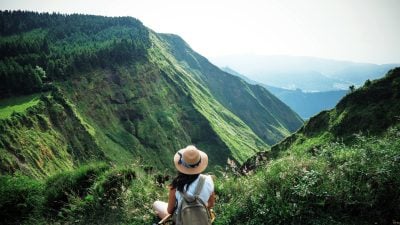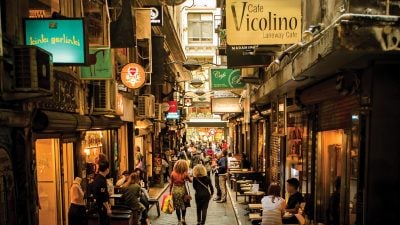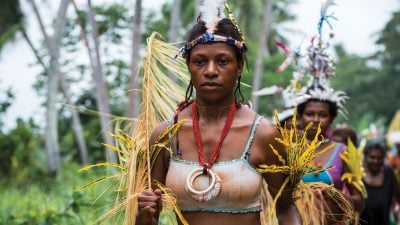Home / UK & Europe / Italy / Welcome to Calcata: Italy̵…
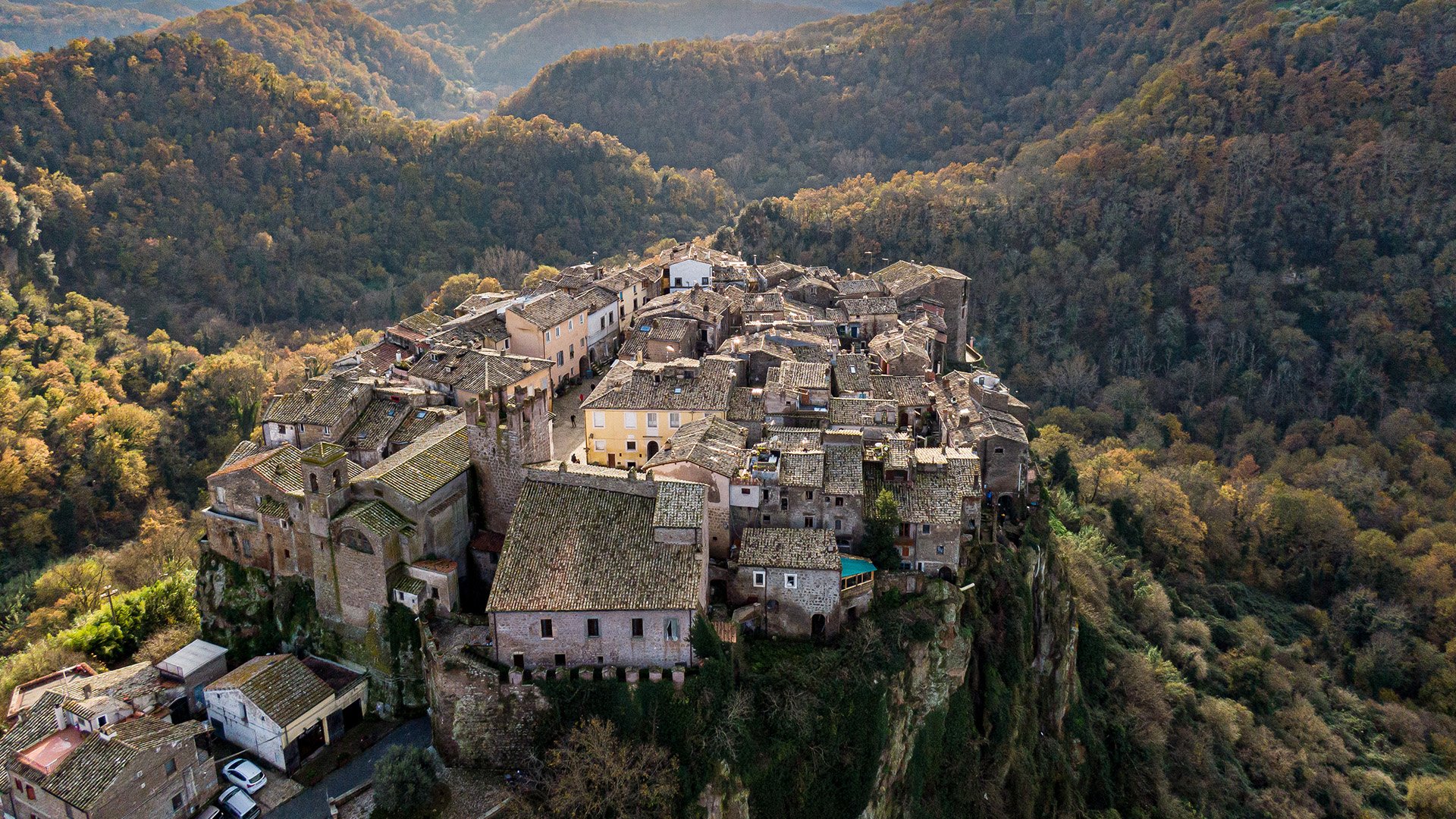
Welcome to Calcata: Italy’s Hippie Haven
Calcata, a medieval hill town wedged in the hills north of Rome, might be the most fascinating village in Italy. And the grooviest. I had lived in the village for two years, penning a book about the experience and then returning a couple of years later with a film crew from National Geographic to participate in a documentary about the book. And yet, here I am, standing on the main square again, my first time back in about a decade. I’ve been in Rome on a magazine assignment and my wife, Spanish artist and photographer Ivana Larrosa, suggested we take an overnight trip here. After all, she’d heard so much about the village’s far-out vibe and knew how much this place and its inhabitants have meant to me.
To fully understand present-day Calcata, we have to go back to Mussolini’s Italy in the 1930s. That’s when the government condemned Calcata, claiming the 450 ft / 137 m cliffs it sits on were in danger of crumbling. This turned out to be cooked-up political charges, but by the 1960s, a new village, called Calcata Nuova, was ready about a half mile away and the old borgo was in the process of being abandoned.
That’s when something interesting happened: hippies and artists began turning up, moving in, and fixing up the place. They even got the government to reverse the death sentence on the village. Many of these hippies had just spent a significant amount of time in India where they were first introduced to a fixture in Hindu temples called a shiva linga. This object consists of a phallic-like linga surrounded by a yoni, which has been translated as “divine passage,” “place of birth,” and “womb” and is often thought of as the vagina to the linga’s phallus, the yin to the linga’s yang. The yoni, which has ridges around its circumference, traps water that is poured over the linga.
And when the hippies first came to Calcata, having just hopped off a plane from the Indian subcontinent, I can imagine what they thought when they got their first glance at Calcata: a rock, rising straight up (with a rickety village plopped on top) smack in the center of a verdant valley with a river running around it. Many of them did, in fact, see it as a natural shiva linga. It was a sign. This was theirs—a natural shiva linga, a sacred place, where a village sits like a cupcake atop a high stump of volcanic tuff stone, its houses made from the same type of rock on which it sits, giving the appearance that the ancient buildings had magically sprouted from the earth in some enchanting, near-mythical bygone age.
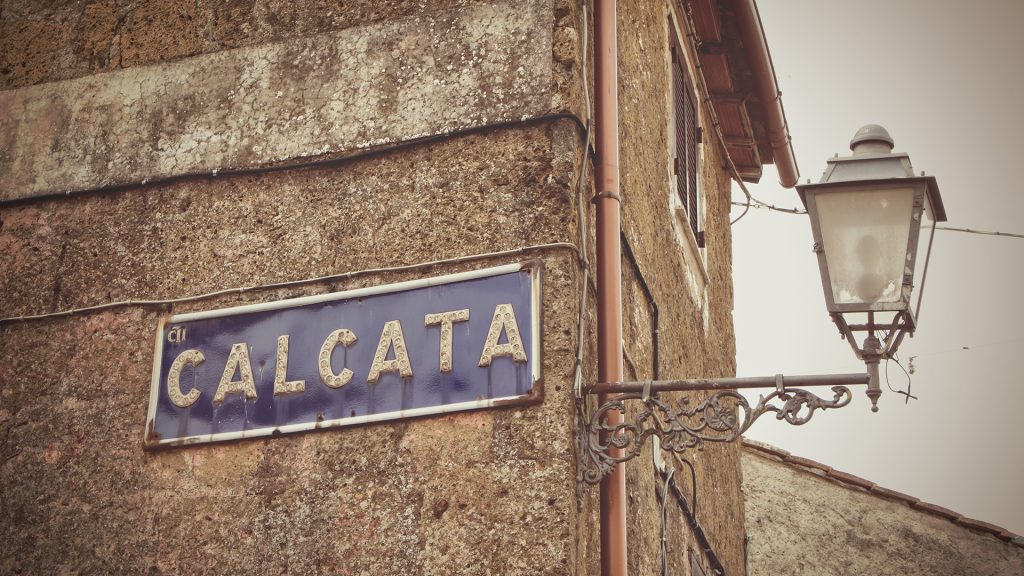
Since then, Calcata has been part of the counterculture movement in Lazio, the central Italian region where Rome is the capital. The 70 or so hippies and artists who (still) live here have opened up art galleries and craft shops. On weekends, when Romans flock here on day and overnight trips, the main piazza is abuzz with people selling crafts and restaurants emitting the scents of wild boar ragu pasta and tender roasted chicken.
“I hope you’re not here to write another book about the village,” says Marina, a craftsperson who sells leather goods and jewelry from a table on the main square. Before I can respond, she adds, “The world is big and interesting and there is a lot more out there than this tiny place.”
She’s right. I assure her that I am only there for one night and we both let out a cathartic laugh. That’s when one of my best friends in the village walks up. Pancho Garrison is a mosaic artist and chef. An American by birth, the 72-year-old has spent most of his life in Italy and has been living in Calcata since 1980. “As you can see,” he says, with swan-like sweep of his arm, “not much has changed.”
Local artist Costantino Morosin carved three Etruscan thrones out of tuff stone in the early ’80s and placed them in the square. They’re still here and they’re now aesthetic fixtures of the village. In this age of Instagram, they’re popular photo props.
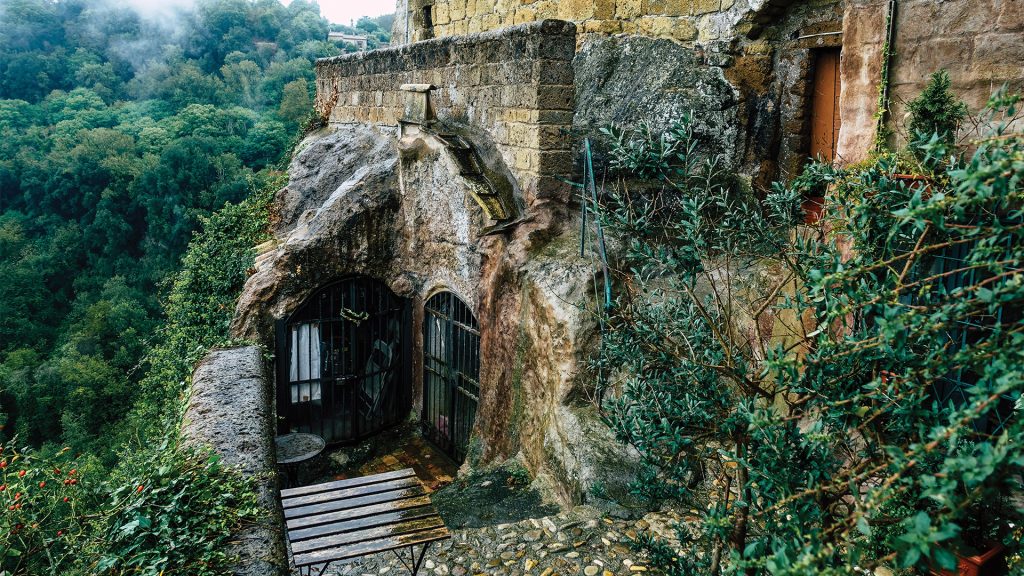
Ivana and I then stroll into the church, whose name, Chiesa del Santissimo Nome di Gesú (Church of the Most Holy Name of Jesus), is a hint as to the very unusual object that had a home here for four and a half centuries.
In 1527, a German soldier was caught outside of the village. He’d just taken part in raiding Rome under the direction of Holy Roman Emperor Charles V. The soldier was thrown in a jail cell fashioned out of a cave in Calcata. He was later released but he left in the cave some of the booty that he had taken from Rome: a bejeweled reliquary. And inside the container, there was a relic, a very odd artifact: the foreskin of Jesus. The pope at the time of the relic’s rediscovery, Pope Paul IV, said that fate brought the relic to Calcata and so there it should remain, putting the village on the weird relics map. The name of the church is a reference to the historic Jewish custom of both circumcising a baby boy and giving him his name on his eighth day. And so, the relic remained in Calcata until 1983 when the relic disappeared under mysterious circumstances.
Today there’s just an empty space at the altar where the relic once sat and a big enigma wrapped in a bejeweled reliquary about what happened to it.
Pancho, Ivana, and I wander into a café. As we sip espresso, Pancho reminds me what he loves about Calcata. “It’s like an atavistic fairytale-like place, a fortress on a hill with a rook and a campanile. Even that the Holy Foreskin was here adds to it. Villagers here have long said the relic is actually the real Holy Grail. The village just has a magical energy oozing from it.” He pauses to take a sip of coffee and then adds, “The other element to Calcata that makes it so special is that nearly everyone here has their own artistic talent and wackiness that makes them unique. It’s still a magnet that attracts unusual and surprising people. And the village has a vibe that inspires people to be themselves.”
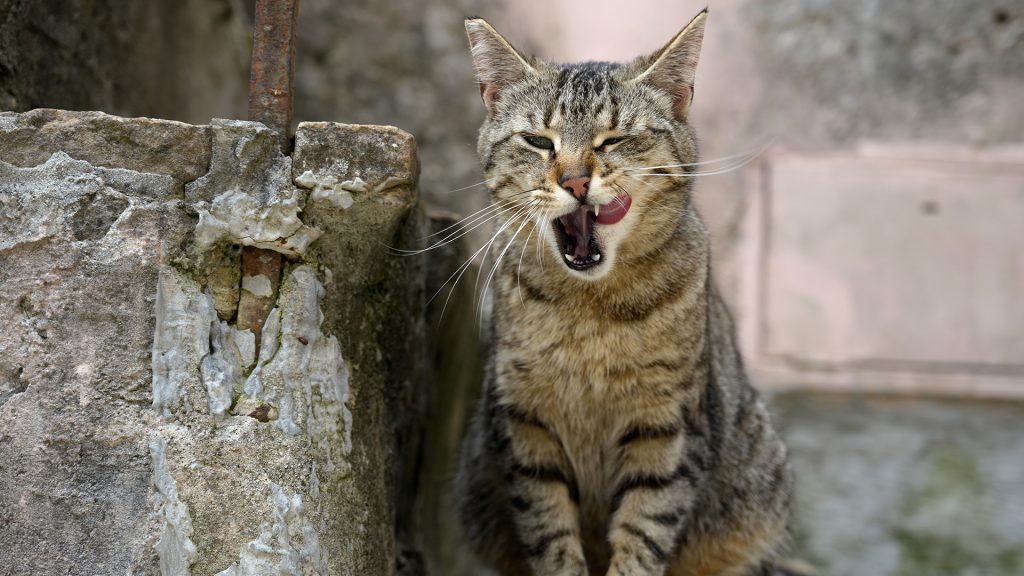
One of those people is Costantino, who walks into the café, wearing his trademark bowtie and his grey hair sprayed up over his head in a Baby Huey ponytail.
“You’re back,” he says, patting me on the shoulder as he walks by. Costantino says he’s moved on from Etruscan thrones to digital art. He pulls out his phone and opens up an app he created. It works in conjunction with Google Maps to produce intriguing digital art that utilizes augmented reality by showing portraits and images he creates on a virtual landscape of the earth.
Just then Angela Marrone, a Naples-born painter, enters the café. “Ciao David!” she says with enthusiasm and gives me a light kiss on each cheek. “Great to see you back in Calcata,” she says. A minute later, we are in her studio, fashioned out of an old theatre. Angela’s paintings, many of which are images of urban landscapes that look otherworldly and fantastical, are crammed on the walls.
In addition to Angela, Costantino, and Pancho, other well-known artists in the village include writer and painter Simona Weller, painter Romano Vitali, Dutch marionette maker Marijcke van der Maden, painter Giancarlo Croce, the recently deceased architect Paolo Portoghesi, and Athon Veggi—a writer, painter, and Egyptologist who lives in a cave on the side of the village with a dozen crows. They’ve all put Calcata on the artistic map.

We spend the rest of the afternoon wandering around the village, popping into the Grotta Sonora, a workshop and gallery fashioned out of an ancient cave. It’s here where a talented young couple named Madhava Carrara and Margherita Cioffi make amazing gongs and do sound therapy sessions. They’ve since become renowned internationally.
We also pop into a new-ish shop called La Cartonera. Owner and artist Silvana Sabatelli, originally from Argentina, sells her unique creations here made out of used cardboard. From looking at and even touching the earrings, necklaces, picture frames, and masks, you’d never guess they were made of repurposed cardboard. When I ask her why she moved to Calcata of all places, she says, “Calcata allows you to be anyone you want, to take chances on achieving a dream.” She looks around her shop and then adds, “I did just that,” and smiles.
After lingering in the square for a while where I meet some old friends from when I lived here, we end up going into a new restaurant called Il Guazzabuglio, which translates from Italian as “the mess” or “jumble.” I feel like a mess when I see who is inside the restaurant waiting for me: a surprise jumble of old great friends from Calcata: Elena, Beatrice, and Omar and his girlfriend, Ludovica. There are hugs, double kisses on the cheek, high fives, and more hugs.
Pancho introduces me to the owner of the restaurant, Veronica Pipiana. “Oh, so you are the writer?” she asks. “I’ve read your book and I loved it. It’s such an honour to have you here.”
We spend the rest of the evening feasting on pasta dishes, drinking red wine, and catching up. It’s the perfect day in Calcata.
Get more travel inspiration by email.
Subscribe
1 Comment
Most Voted

Get the latest travel trends & hear about the best deals on vacations around the world.
If you’re a Globetrotter, these are the newsletters for you!
